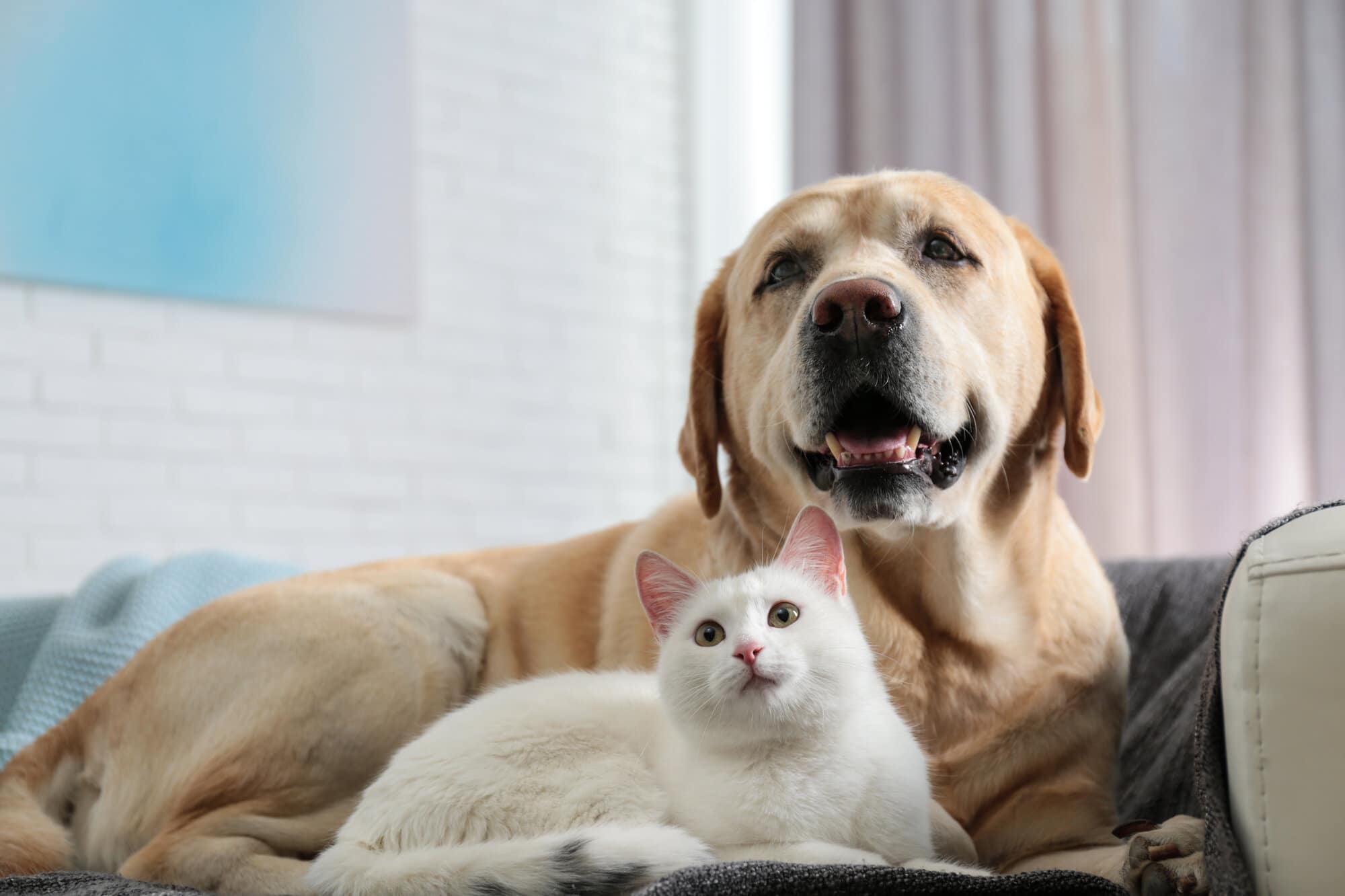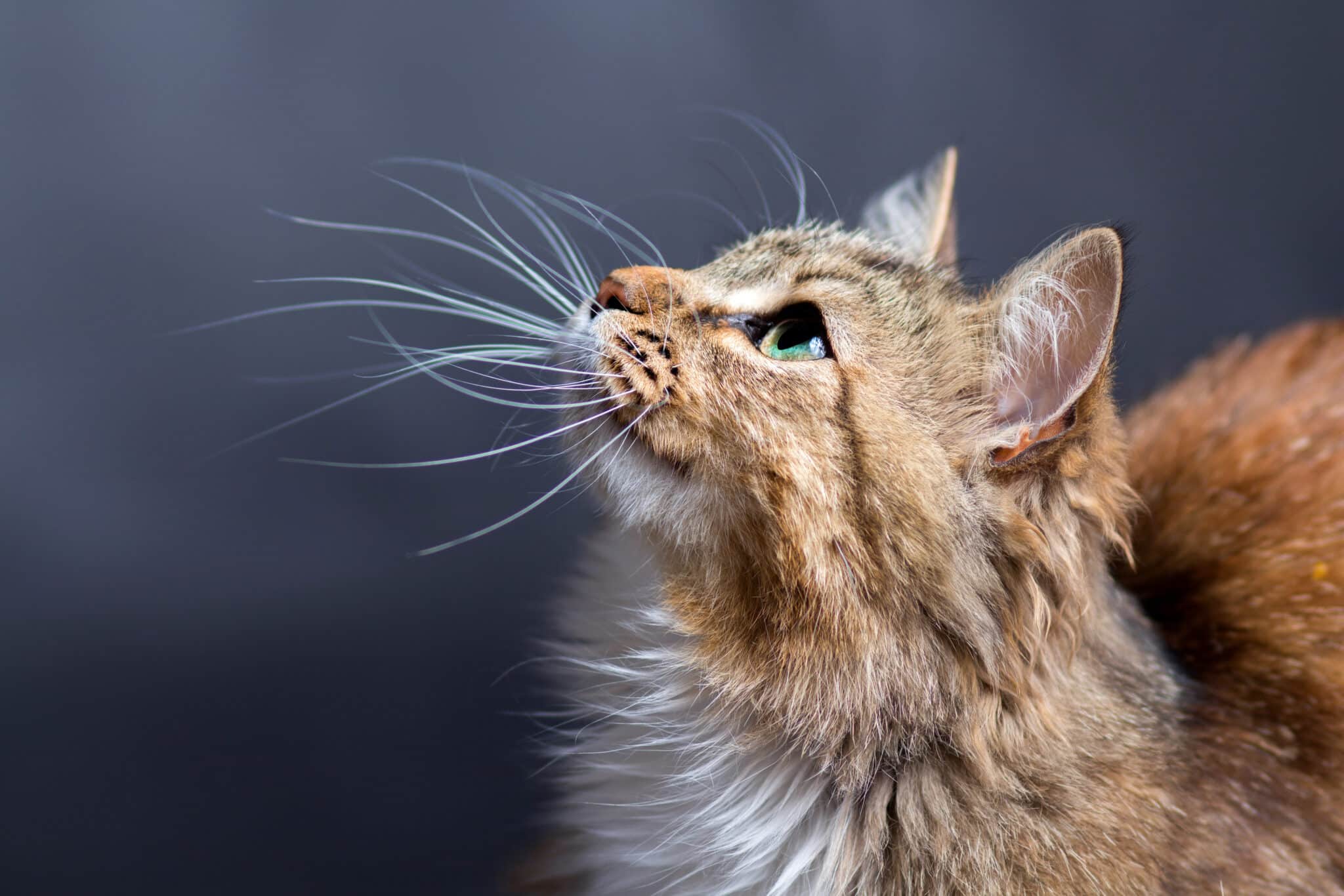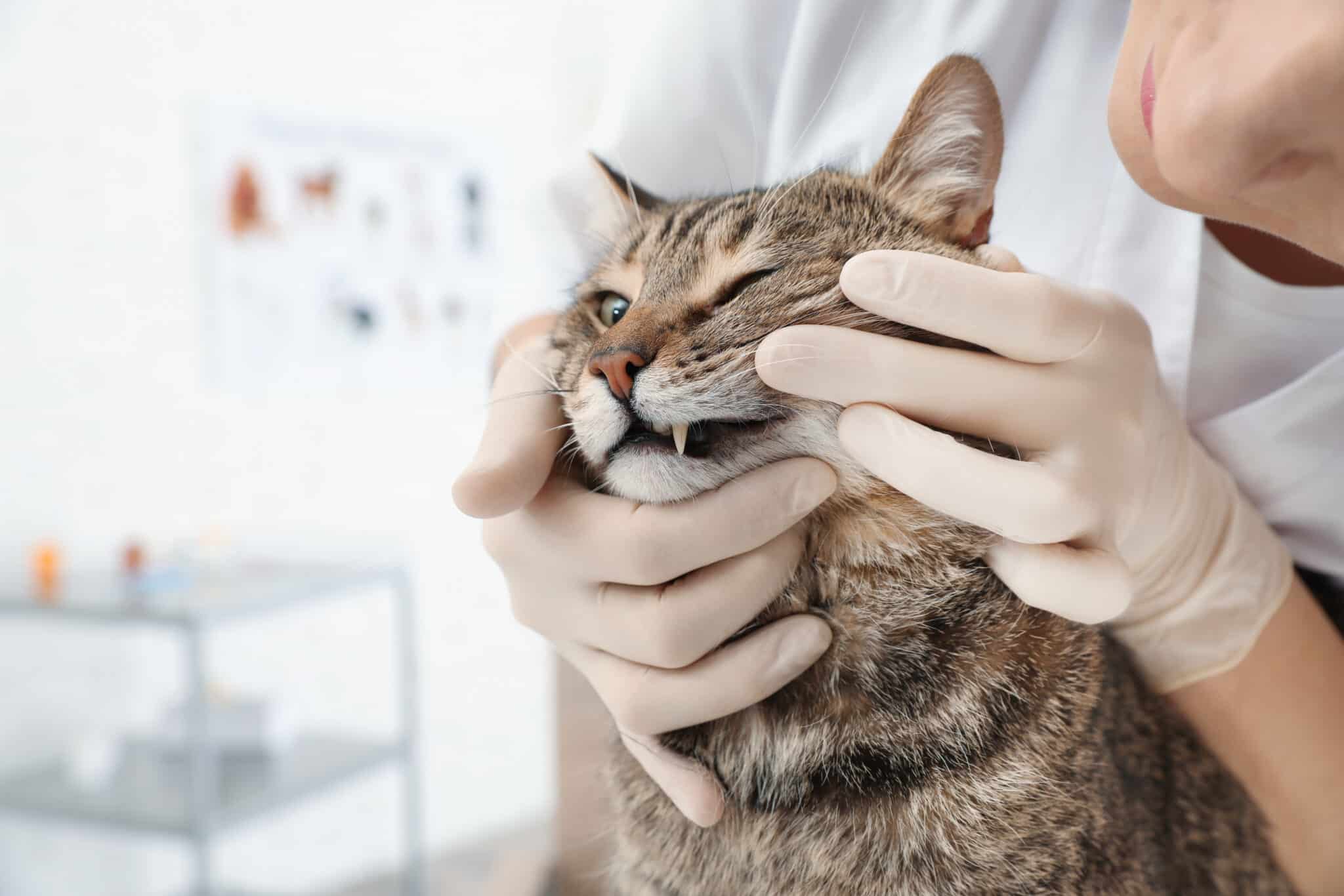The Best Pet Insurance for 2024
- Lemonade: Our top pick
- ASPCA Pet Health Insurance: Our pick for senior pets
- Pets Best: Best for vet-direct pay
- Embrace: Best for multiple pets
- Figo: Most affordable
- Spot: Best for customizable coverage
- Fetch: Best for comprehensive coverage
- Trupanion: Best for service animals
- Nationwide: Best for Nationwide insurance members
- Healthy Paws: Most affordable unlimited coverage
The Best Pet Insurance Companies in Detail
How We Ranked The Best Pet Insurance Companies
To rate and rank the best pet insurance companies in the industry, we developed a rating methodology that considers factors such as monthly pricing, covered treatments, customer care, industry reputation and more. To accurately rate each provider, we gathered sample insurance quotes using various pet profiles, evaluated customer reviews through third-party aggregators, and surveyed 3,000 pet owners nationwide. We also consulted key members of the pet insurance industry, including licensed veterinarians.
Our expertise is backed by:
- Three thousand pet owners surveyed nationwide
- Thirty-three pet insurance providers rated using our methodology
- Over 40 years of combined veterinary experience between our writers and reviewers
- Over 17,330 quotes were gathered using 10 different pet profiles from 21 providers nationwide
When shopping for pet insurance, you may come across several companies that did not make our list of top providers. While we have reviewed and rated other companies like ManyPets, MetLife and Pawp Pet Insurance, we selected our list of the best providers based on the factors most important to you. Learn more about our review criteria and how we choose which companies are among the top insurers nationwide.
Pet Insurance Alternatives
If you feel that pet insurance isn’t the right fit for your pet’s needs, there are alternative products and steps you can take to help offset costs if your pet experiences an unexpected illness or accident. For one, you could put what you’d spend on a monthly premium into a dedicated savings account, starting an emergency fund for your pet. Or, you could take your pet to a veterinary college for care. Many colleges offer discounts on treatment and care that would cost more elsewhere.
Another alternative is Care Credit, which can allow you to defer the upfront out-of-pocket costs associated with your pet’s medical bills through financing. Most veterinary specialists and animal hospitals offer this, and there is no interest associated with payments if you make your monthly payments in full over the course of your loan. No matter what you decide, there are alternatives to pet insurance that can help you cover the costs of your dog or cat’s vet care.
Compare Pet Insurance Companies and Plans
Use this table to quickly compare the coverage and options offered by many of our top picks:
How To Find the Best Pet Insurance Company
Here are some things you may want to look for when comparing pet insurance providers:
Compare Similar Coverage Plans
Some providers offer only one accident and injury plan that is designed to provide basic coverage in case of an emergency. However, if you want more comprehensive coverage, look for a company that offers accident and injury plans and wellness add-ons. This allows you to choose a plan that will cover a wide range of veterinary expenses.
The cost of coverage can vary between pet insurance companies. For example, you may find that the same coverage costs significantly more with one provider compared to another. When shopping for pet insurance, select the same deductible, annual coverage limit and reimbursement rate, and ensure the plans cover the same types of conditions to ensure an equal comparison.
Customize Coverage
Being able to customize the deductible, annual coverage limit and reimbursement rate allows you to customize your plan and reach a monthly premium that fits your budget. Some plans offer limited options, whereas others, such as Spot, offer multiple deductibles, annual coverage limits and reimbursement rate options.
Diminishing Deductibles
Some companies offer a diminishing deductible if you do not file a claim. For example, Embrace pet insurance offers the Healthy Pet Deductible benefit, which credits pet owners $50 toward their deductible each consecutive year they do not file a claim
Considering Unlimited Coverage
If your pet develops a complex medical condition or suffers a serious injury, vet bills could reach tens of thousands of dollars. Having unlimited coverage can help ensure you will not have to pay for 100% of your pet’s care after hitting a certain limit.
Easy Claims Process
Most pet owners do not want to mail in claims forms or wait weeks or months for their reimbursement. Look for a company that offers digital claims submission, either through its website or an app. Additionally, you can read online reviews to see what customers have to say about the claims process and reimbursement waiting times.
24/7 Veterinary Support
Some companies, such as Pets Best, offer a 24/7 helpline staffed by veterinary professionals who can answer questions about your pet’s health care. They can help you decide whether your pet needs to see a veterinarian and whether the issue requires immediate attention.
Pet Insurance Discounts
Many companies offer a discount if you enroll more than one pet. Although the monthly premium may be similar between providers, choosing a company that offers a 10% multi-pet discount can lower your cost. Use the table below to compare discounts offered by pet insurance providers.
Discounts by Provider
How Much Does Pet Insurance Cost?
According to our analysis of over 17,330 quotes across 21 pet insurance providers, the national average cost of pet insurance is $60 per month for dogs and $32 for cats. However, while we can estimate the average cost of pet insurance, the actual price you’ll pay depends on several factors, including your pet’s species, breed, age and location. The cost will also depend on the provider and plan you choose.
When choosing coverage for your pet, we recommend comparing plans from at least three providers before purchasing. Pet insurance is not one-size-fits-all, and many options exist so pet owners can tailor plans to their dog or cat’s medical needs.
The table below compares the average policy costs for dogs and cats from the providers featured in this review.
| Company | Average Cost for Dogs | Average Cost for Cats |
|---|---|---|
| Lemonade | $52 | $29 |
| ASPCA Pet Health Insurance | $50 | $22 |
| Pets Best | $41 | $23 |
| Embrace | $64 | $33 |
| Figo | $27 | $15 |
| Spot | $68 | $30 |
| Fetch | $50 | $28 |
| Trupanion | $131 | $51 |
| Healthy Paws | $49 | $19 |
Is Pet Insurance Worth the Cost?
Pet insurance is worth it for most pet parents because the monthly cost of coverage is affordable relative to the high cost of treating a significant injury or illness, based on our survey results. Although pet insurance is an additional monthly expense, it can help in the long run if your pet has an accident or illness that costs thousands in medical bills. See the table below for the average national cost of pet insurance for 10 unique pet profiles our team used to gather quotes.
| Pet Profile | Average Cost* |
|---|---|
| 3-month-old kitten | $22 |
| 3-month-old puppy | $38 |
| 1-year-old medium, mixed-breed dog | $39 |
| 1-year-old domestic shorthair cat | $22 |
| 2-year-old Siamese cat | $25 |
| 2-year-old golden retriever | $53 |
| 5-year-old medium, mixed-breed dog | $51 |
| 5-year-old mixed-breed cat | $27 |
| 8-year-old domestic shorthair cat | $39 |
| 8-year-old small, mixed-breed dog | $62 |
We surveyed 1,000 dog and cat owners to understand their motivations for purchasing a pet insurance policy. While 36% of pet owners who’ve never purchased a policy reported feeling unsure about investing in coverage, 99.5% of owners with pet insurance don’t regret buying coverage.
Veterinary bills for unexpected illnesses and injuries can quickly add up to thousands of dollars, and pet insurance can prevent you from making difficult decisions about your pet’s care based on finances. Although a pet savings account is an alternative to pet insurance, you may not be able to save a substantial amount of money to cover the care your pet needs in an emergency.
How to Find the Best Pet Insurance for Dogs
Pet insurance for dogs isn’t a one-size-fits-all product. However, according to our analysis and review, Lemonade is the best dog insurance company and offers the cheapest plans for dogs.
When deciding on a coverage plan, our team recommends considering factors unique to your dog, such as its breed, age, health history and more. We’ve included some examples below for different types of dogs.
Think About Your Dog’s Lifestyle
If you live an active lifestyle and spend time outdoors with your dog, your pet will likely have a higher risk of getting fleas and ticks versus an indoor pet. It may also have a higher risk of cuts or accidents if you’re adventuring on rough terrain. In this case, consider a pet insurance policy with coverage for accidents and illnesses associated with outdoor and adventure activities. Some wellness plans may also include preventative treatment for parasites.
Consider Your Dog’s Health History
Pet insurance companies generally don’t cover pre-existing conditions, typically defined as an illness or injury existing before your pet’s coverage takes effect or during the waiting period. However, some pet insurance companies categorize pre-existing conditions as curable and incurable. If your pet has a curable condition and goes symptom-free for a set time period, some providers will treat recurrences as a new problem.
Examples of curable conditions include bladder infections, ear infections and more. If your pet has recently suffered from such a condition, consider a provider that deems pre-existing issues as curable and may cover recurrences after time passes.
Check Company Age Restrictions
Some companies set age limits for coverage, which means if you have an older or senior dog, your pet may only qualify for restricted coverage — or no coverage at all. However, some providers, such as Lemonade, ASPCA Pet Health Insurance and Figo, set no limits on the eligible age for coverage. When shopping for a policy, we encourage you to gather quotes from providers that will not deny or restrict coverage for your senior pup.
Research Breed-Specific Conditions
Some breeds are predisposed to certain conditions and illnesses, such as hip dysplasia, skin allergies, glaucoma and more. All pet insurance providers have waiting periods for coverage that vary for accident, illness and orthopedic conditions. While accident and illness waiting periods generally last less than a month, waiting periods for orthopedic conditions can last up to a year, according to our research. If you own a breed predisposed to these types of issues, such as French bulldogs, it is important to understand the waiting periods associated with a policy.
How to Find the Best Pet Insurance for Cats
Cats also have unique needs to consider when deciding on a pet insurance policy. According to our research, Lemonade offers the best pet insurance for cats, but ManyPets is the cheapest cat insurer.
When choosing a plan for your kitten or cat, consider feline health issues, living outdoors versus indoors, wellness coverage and more.
Consider Added Risks for Outdoor Cats
Outdoor cats are more susceptible to fleas, ticks, run-ins with other animals and more, which increases the chance of needing treatment for an accident or illness. If your cat spends most of its time outside, you may consider a pet insurance plan with coverage for both accidents and illnesses. A wellness plan with microchip coverage may also be something to think about, especially if your cat likes to roam far when outside.
Explore Cat Wellness Coverage
Wellness coverage provides a set reimbursement rate for routine and preventative care services, such as dental cleaning, vaccinations, heartworm medication and more. Opting for wellness coverage could pay off in the long run — just as regular maintenance is required to keep your car in top shape, preventative care for your cat could keep it from developing health issues as it ages.
Find Plans Covering Common Feline Health Problems
According to the ASPCA, common feline health problems include heartworm, ringworm, upper respiratory infections and more. A pet insurance plan that covers these types of common issues could save you from paying high vet bills for any necessary treatments.
Pet Insurance: What To Know
Before selecting a pet insurance provider, we recommend learning more about what a pet insurance plan looks like and how it works. Here are some helpful pieces of information to prepare you to sign up for a policy.
Plan Options
You can find a standard set of plan options across most pet insurance providers, which include accident-only plans, accident and illness policies, and wellness coverage.
- Accident-only plans: Typically more affordable than accident and illness coverage, this plan covers costs associated with accident-related injuries such as broken bones.
- Accident and illness plans: This comprehensive plan covers expenses related to diagnostics and treatment for both accidents and illnesses, including diseases, allergies, infections, broken bones and more.
- Wellness coverage: Often sold as an add-on, wellness coverage reimburses routine care services such as dental cleaning, vaccines and more.
- Other add-ons: In addition to these standard plan options, some providers offer add-ons that cover vet exam fees, behavioral conditions, physical and alternative therapy treatments, and end-of-life services. Offerings will vary by provider.
Based on our research, we recommend accident and illness plans to pet owners looking for comprehensive coverage and peace of mind. If you’re looking for coverage on a budget, an accident-only plan offers baseline coverage for less money per month in the event of an accident.
Customizability
When researching pet insurance plans, several considerations impact the coverage you will receive. Many of these options are customizable and will impact your monthly premium.
The deductible is the amount you have to pay before your insurance coverage kicks in. Deductibles typically range from $100 to $1,000 and the larger the deductible, the lower your monthly premium. Choosing a higher deductible can help keep monthly premiums affordable, but you will have to pay more out of pocket if you file a claim.
The coverage limit is the maximum amount your insurance provider will pay out over the course of your policy. Coverage limits are customizable and range from about $3,000 to $10,000, although some providers offer unlimited coverage. We recommend selecting the highest coverage limit you can afford to provide adequate coverage if you file a claim.
This is the percentage of the bill your provider will pay after you cover the deductible. Typical reimbursement rates are 70%, 80% and 90%, although a few providers offer plans with 100% reimbursement. Higher reimbursement rates come with higher monthly premiums, so we suggest choosing the highest rate that fits your budget.
Waiting Periods
The waiting period is the time period after purchasing a policy before your pet’s coverage begins. A typical waiting period is about 14 days, although some providers offer a shorter waiting period for accidents. For example, Lemonade and Embrace offer a two-day accident waiting period.
Waiting periods exist to prevent pet owners from purchasing pet insurance to cover an existing condition. Pet insurance is meant to cover future problems, so coverage does not begin immediately after enrollment to prevent insurance fraud.
Pre-Existing Conditions
Pre-existing conditions are health conditions that arise before your coverage begins, either prior to enrollment or during the waiting period. No pet insurance companies cover pre-existing conditions, although some conditions may no longer be considered pre-existing if your pet goes a certain period of time without recurring symptoms. Having a pre-existing condition does not mean that your pet is ineligible for pet insurance entirely, but that your plan will not cover treatments related to that condition.
As a general rule of thumb, a condition that is chronic, incurable, and likely to return will not be covered by pet insurance. If an illness or injury is treatable and is cured more than one year prior to enrolling, you will be eligible for coverage with some providers, including Lemonade and Spot.
Claims Process
Most pet insurance companies offer a reimbursement after you pay your pet’s veterinary bill. In other words, you will have to pay for veterinary care upfront and then file a claim for reimbursement. If the incident is covered, your provider will reimburse you the percentage dictated by the terms of your plan, minus your deductible. Many providers offer claim submission through their website or an app, which makes the process quick and easy.
There are a few providers that pay your vet directly, such as Trupanion. However, this option is available only at participating veterinary practices.
Insurance Availability
Most providers offer pet insurance throughout the U.S., although there are some exceptions. Research different providers to determine which offer pet insurance in your state.
Canceling Pet Insurance
If you decide you no longer want pet insurance or want to switch to another provider, most pet insurance plans allow you to cancel your policy at any time. Several providers, including Spot and Embrace, have a 30-day money-back guarantee, meaning you can cancel the policy within the first 30 days and receive a full refund.
We recommend you review the specific cancellation policy for the providers you are considering so you are fully aware of the conditions.
What Veterinarians Think About Pet Insurance
In general, veterinarians recommend pet insurance because it offers financial coverage to ensure pets receive life-saving health care. In many situations, it also allows pet owners to provide a better level of care, because they do not have to make decisions based on finances.
Veterinarians typically recommend that pet owners purchase an insurance plan when their pet is young and healthy. The longer you wait, the more likely it is that your pet will develop a pre-existing condition that will not be covered when you do purchase a plan. Dr. Linda Simon, a veterinary surgeon and consultant at FiveBarks, said,
“Taking insurance out before the first vet check, when congenital diseases like heart murmurs and limb deformities can be picked up, is a real no-brainer.”
Dani Rabwin, a doctor of veterinary medicine (DVM) and CEO of Ready, Vet, Go, echoes these sentiments.
“I recommend pet insurance for almost all pets, but especially young animals that are otherwise healthy and without pre-existing conditions,” Dr. Rabwin said. “This will allow for the least expensive and most comprehensive insurance.”

What Pet Owners Think About Pet Insurance
In April 2024, we conducted our third annual pet insurance survey, which included 1,000 participants, to better understand how pet owners feel about their decision to purchase an insurance policy. We then compared our findings to our 2023 survey to gain insight into relevant trends around satisfaction with a policy.
Based on this survey, we found that 31% of participants named veterinary care as the most significant expense for their pet. This expense was the largest for 27% of participants in our 2023 survey, which shows a year-over-year increase of 4%. In addition, coverage was the most important factor in choosing a plan for both 2023 and 2024 participants, with positive customer reviews following closely behind.
When asked whether pet insurance was worth it, 81% of respondents in our 2023 survey answered yes. This amount increased by 4% in 2024, with 85% of participants pleased with their decision to purchase a pet insurance policy.
In 2024, we gave participants who felt pet insurance was worth it the opportunity to express why. Many policyholders felt their pets were a part of their family, noting the peace of mind they receive knowing insurance can help cover vet expenses in an emergency. One participant summed up the thoughts of many pet owners in our survey, stating:
“In my opinion, pet insurance is worth every penny. If you love your pet like I do, you will do everything that’s best for them.”
How To Buy a Pet Insurance Plan
We’ve broken down how to purchase a pet insurance plan into 3 easy steps:
- Research: While we research and publish pet insurance provider reviews to help consumers find the right pet insurance plan, we encourage you to research companies independently. You can read reviews from third-party aggregators such as the BBB and Trustpilot, browse forums, including Reddit, for additional first-hand experiences, and note each provider’s industry reputation and offered plans.
- Compare: Gathering quotes from multiple pet insurance companies can help you better compare both cost and coverage for your pet. As quotes are free, we recommend getting at least three from any of the providers listed in this review.
- Buy: Once you’ve decided on a policy, it is best practice to read the fine print in your contract before finalizing your purchase. If you have any questions, reach out to a customer service representative for clarification on contract terms.
Pet Ownership Trends for 2024
Frequently Asked Questions About Pet Insurance
Pet insurance premiums increase as your pet gets older. This is because the older your cat or dog is, the more likely they are to have health issues such as arthritis and hip dysplasia. Some pet insurance companies, such as Healthy Paws, do not raise premiums as pets get older.
Pet insurance costs are based on many factors, including breed. In general, breeds that are more likely to develop health problems, such as boxers and French bulldogs, may have higher insurance premiums than breeds that are known to be generally healthy.
There are many ways to lower the cost of pet insurance so it fits your budget. Most plans are customizable, allowing you to adjust the deductible, annual coverage limit and reimbursement rate to make your monthly premium more affordable. Additionally, many providers offer discounts if you enroll multiple pets, are an active military member or bundle pet insurance with other insurance products.
Yes. According to the National Association of Insurance Commissioners, anyone interested in pet insurance should do their research before purchasing a policy. It is worth shopping around to ensure you’re getting the best care coverage for your pet and the best price for your budget. This is why we encourage getting quotes from at least three pet insurance companies before purchasing a policy.
This answer varies depending on a variety of factors that matter most to you. Based on our ranking of pet insurance companies, we recommend Lemonade due to its easy claim process, high coverage options and affordable pricing. If you are looking for a pet insurance policy with unique features, we recommend you compare pet insurance plans that work best for you and your pet’s needs.
Methodology: Our System for Rating Pet Insurance Companies
Our review of the best pet insurance companies is based on in-depth industry research that includes reading hundreds of customer reviews, manually obtaining over 17,330 quotes, speaking to representatives on the phone to assess the customer service experience, and surveying thousands of dog and cat owners nationwide to determine the most important elements of pet insurance coverage.
We scored each provider on a 100-point scale based on those elements. We then divided this final score by 20 to calculate an overall star rating out of 5 stars. Here are more details about each factor and how it’s weighted by our team:
- Monthly pricing (25%): Based on our research, the best pet insurance companies combine comprehensive coverage and plan options with affordable rates. To gauge the average cost of each provider, we collected over 17,330 quotes for 10 different pet profiles in all 50 U.S. states.
- Plans (15%): The top pet insurance companies offer accident-and-illness plans, accident-only plans, and wellness or preventive care add-ons to give customers the option to choose the best coverage for their pets.
- Covered treatments (15%): We scored each company based on the treatments and procedures it covers. Companies with a breadth of included treatments and unique coverages received more points than providers with more standard or general policies.
- Customization options (10%): Providers with higher annual limits and more deductible and reimbursement-rate options earned the highest scores in this category.
- Customer care (10%): We scored companies on website accessibility and overall usability, customer service availability, mobile apps (if any), money-back guarantees and veterinarian telehealth options. We awarded the most points to insurers with various customer experience channels and offerings.
- Industry reputation (10%): We reviewed up-to-date ratings and accreditation information from the Better Business Bureau (BBB) and scored companies on years of industry experience and state availability.
- Waiting periods (10%): Companies with shorter accident, illness and orthopedic waiting periods between the policy sign-up and coverage start date scored higher than companies with longer delays.
- Eligible age (5 points): Some companies don’t offer policies for pets over a certain age, which can limit coverage options for certain pet owners. We deducted points from providers that have age limits for covered pets.
We use this rating system to compare and contrast each company and determine the best pet insurance companies in the industry. To rank the providers in this review, we examined our star ratings for 27 providers nationwide using our methodology. The highest-rated providers earned a spot on our list of top picks.
To learn more, read our full pet insurance methodology for reviewing and scoring providers.
If you have feedback or questions about this article, please email the MarketWatch Guides team at editors@marketwatchguides.































